A memorable visit to Xinjiang

A glimpse of Urumqi, capital of Northwest China's Xinjiang Uygur autonomous region. [Photo provided by Shikha Pandey]
Xinjiang Uygur autonomous region in the western part of China was one of the most important places of trade and cultural connection on the ancient Silk Route. It is now serving as an important route for Belt and Road Initiative, connecting China with the countries in Central Asia and Middle East, including the China-Pakistan Economic Corridor.
The three-week Sinologist visiting program organized by the Ministry of Culture and Tourism of China to Xinjiang was indeed a mesmerizing experience, and I was fortunate to represent India along with the other representatives from 21 countries. Xinjiang, which is being less explored and understood in terms of its culture and society, stands out to be different among all other provinces in China I have been so far.
The region is rich in a variety of resources, including its natural beauty, flora and fauna, fruits and crops, greenery, racial and ethnic diversity, and a robust culture and history that it has preserved over the course of many years. Understanding the current situation in Xinjiang comes with many aspects, and assessing what's going on in the region should be seen with different perspectives.
To begin with, one must first have an understanding of the growth taking place in China, which includes Xinjiang as well. Even though it is surrounded by mountains, basins and desert, Xinjiang boasts every advanced infrastructural facility that one would normally expect to see in the metro cities of China such as Beijing, Shanghai, Chongqing, Shenzhen, etc. The regional capital, Urumqi, features a variety of modern amenities, including skyscrapers, big malls, broad roads and flyovers, metro and bus stations, banks, universities, and multinational fast-food chains like McDonald's, KFC and Burger King.
When compared to China's more developed cities like Shanghai and Beijing, the cost of living in this city is noticeably more reasonable. It is possible to get by on less money spent on food and public transport without sacrificing the quality of either. There are also a lot of large public parks in the city where people may go to relax and take in the sights of the city.
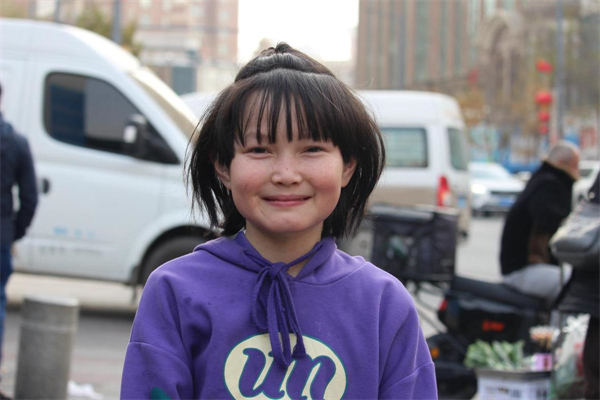
A little girl happily poses for a picture. [Photo provided by Shikha Pandey]
While exploring the streets during the day, one could come across the locals from the diverse ethnic background such as Han, Uygur, Hui, Kazak, Kirgiz ethnic groups and more. The locals seem to get curious to see a foreign face among the crowd, since not many foreigners are seen in the city compared to the other cities in China. On many occasions, while exploring the streets of Urumqi or Kashgar, I was being asked by many of the locals about my nationality or they themselves guessed whether I am an Indian. I could see their excitement getting doubled upon knowing that I am from India, since the influence of Bollywood is strong there and most of them know Shahrukh Khan and Amir Khan through the Bollywood movies. The kids I met on a street were happily taking selfies with me and a friend accompanying me.
It was very convenient to go around the places and communicate with the locals, since language wasn't a barrier for me. The night life in Urumqi is equally enthusiastic with a lot of street food to eat and clubs and pubs to visit, which runs till late night. I also ran across a few Indian medical students on the street going to have some street food. They told me that they have come from Bangalore, Delhi and Jaipur and are pursuing their medical studies from Xinjiang Medical University in Urumqi.
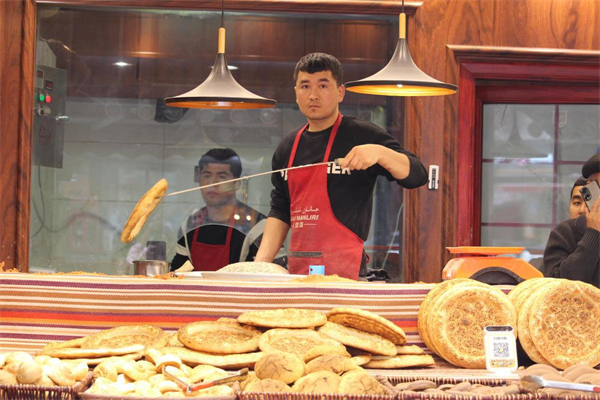
A local makes popular Xinjiang naan on the street of Urumqi. [Photo provided by Shikha Pandey]
Xinjiang exhibits remarkable natural beauty and boasts a stunning and awe-inspiring terrain. The geographical location of Xinjiang has favored it in every aspect of displaying its beauty. The northern region of Xinjiang is encompassed by the Altai Mountains, characterized by their snowy peaks. Moving towards the central part, the landscape is defined by the Tianshan Mountains, also adorned with snow-capped summits, as well as the Turpan Basin, which holds the distinction of being the lowest point below sea level in China.
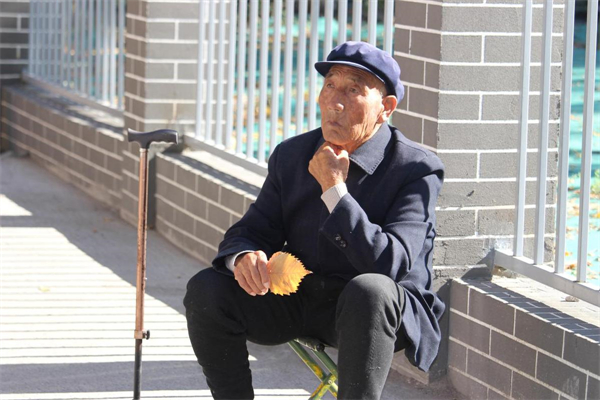
An old man is basking in the sun in autumn. [Photo provided by Shikha Pandey]
In the southern part of Xinjiang, the Kunlun Mountains dominate the scenery, accompanied by the Tarim Basin, known as the driest region in Eurasia, and the Taklamakan Desert. I had the privilege of visiting the Tianshan Mountain and the Heavenly Lake, the Turpan City, the historical town of Jiaohe, Thousand Buddha Caves and the historic city of Kashgar, which holds significance as one of the key cities along the ancient silk route.
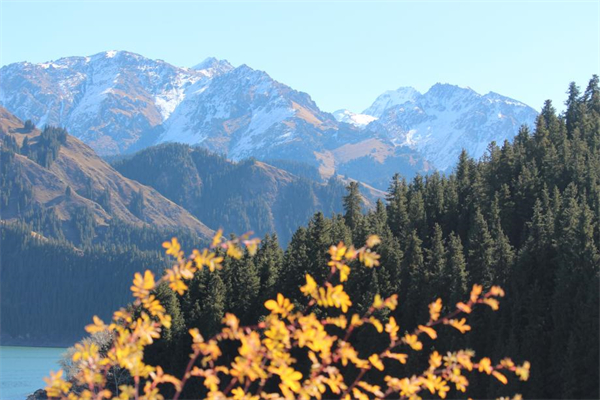
The snow-capped Tianshan Mountains. [Photo provided by Shikha Pandey]
I was especially amazed to witness the old town of Jiaohe (around 2000 years old) and the Thousand Buddha Caves paintings dating back to a thousand years ago but in their original state. Thousand Buddha Caves is another piece of evidence of the religion exchange between India and China's Xinjiang Uygur autonomous region, which has proved the strong people to people connection on the ancient Silk route.
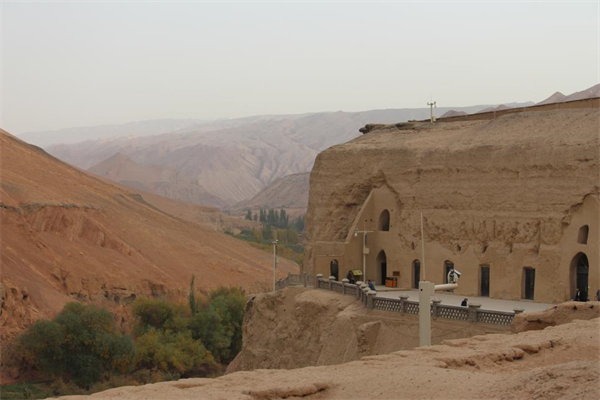
Jiaohe ancient city in Turpan, Xinjiang Uygur autonomous region. [Photo provided by Shikha Pandey]
Today, the influence of Buddhism could be seen in the whole of China. Each of these destinations has made a significant impact, encompassing their remarkable natural landscapes and the enduring historical events that unfolded within them. These sites persistently embody the vibrant culture of the region while simultaneously preserving its pristine natural environment, which is less explored and understood in the foreign world.
A visit to China's famous milk and dairy products factory, Xiyuchun, in Changji city, was a very insightful learning experience to see how the factory works and how production takes place. China indeed has advanced technology when it comes to factory operations and production on a large scale. The other interesting place was the Changji National Agricultural and Technology Park. The park is equipped with many greenhouses to grow organic vegetables. The park area was huge, with a big flower garden and many other agricultural products grown within the vicinity.

The photo is taken from a grape farm in Turpan. [Photo provided by Shikha Pandey]
We also came across many grape and cotton farms in the regions of Changji and Turpan. The most popular Hami muskmelon comes from Xinjiang's Hamiprefecture. Xinjiang produces some of the best-quality fruits (such as pomegranates, a variety of grapes and melons, apples, etc.) on its land. It was my first time to see apple trees in Turpan, and I was overjoyed to pluck an apple directly from the tree and enjoy the sweetness in every bite.
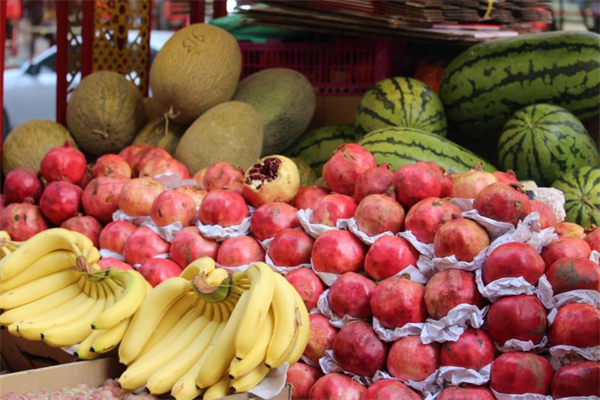
Fruits on the street of Urumqi [Photo provided by Shikha Pandey]
Xinjiang, a region with a rich historical heritage, serves as a prominent centre for the cultivation and expression of many art forms, customs and traditions, dance performances, and musical compositions, which have flourished over the course of millennia. The intercultural connection between the languages, art and culture of Xinjiang and various other countries linked by the historical silk route could easily be observed in the daily life of the people in Xinjiang. Numerous stringed musical instruments bearing resemblance to traditional Indian counterparts such as the Sitar, Sarod, Sarangi and Dilruba could be seen on the streets or played by the locals.
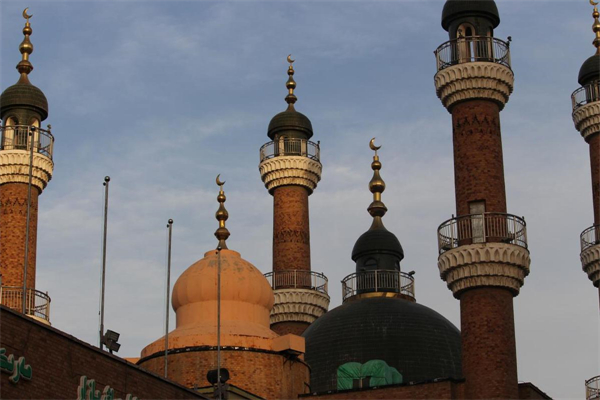
A mosque in International Bazaar, Urumqi [Photo provided by Shikha Pandey]
The people of Xinjiang also love to sing and dance, just like Indians, and they have their own dancing and singing style, which is distinguished between the Uygur, Kazak and Uzbek groups of the region and are fun to perform along with them. While exploring the International Bazaar, we came across a big crowd of locals having their leisure time and were happily dancing in pairs, spending their evening with music and entertainment.
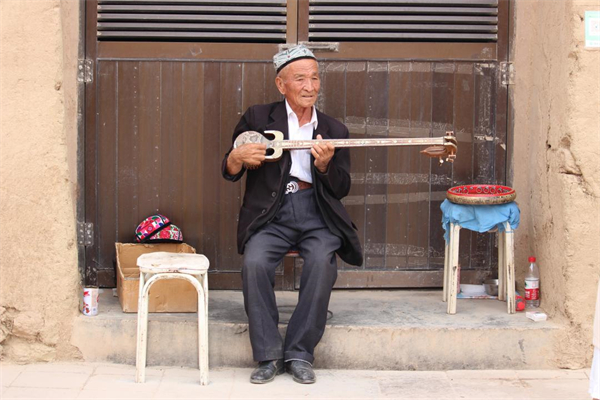
A local of Xinjiang playing the Rawab musical instrument [Photo provided by Shikha Pandey]
Xinjiang's embroidery artwork also exhibits comparable characteristics to those observed in Indian embroidery work. In addition, the preference for vibrant hues is evident in their artistic expression, with red being particularly prevalent. Furthermore, they use various animal-inspired motifs, such as goat horns and phoenixes, in their designs.
In the realm of Indian embroidery art, one may observe comparable characteristics that draw inspiration from the natural world, encompassing avian creatures, floral motifs and a diverse array of Mandala patterns. In relation to the regional Uygur language, there are specific lexical items that exhibit overlap with the Urdu language. Additionally, both of these linguistic systems have been subject to the impact of the Turkish language.
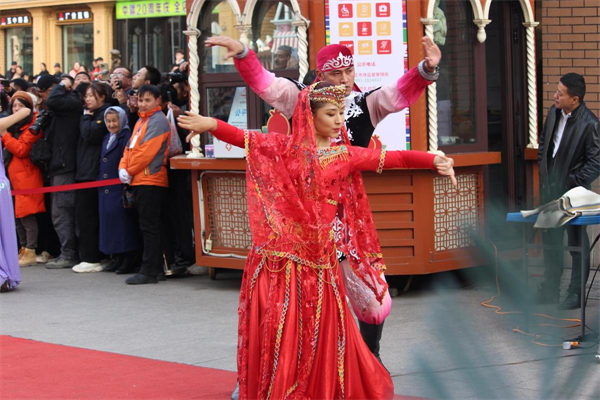
A traditional dance performance on the street of International Bazaar, Urumqi [Photo provided by Shikha Pandey]
As an illustration, it is worth noting that the term denoting onion in both Uygur and Urdu languages coincides, being "Piyaz", while the designation for almond is "Badam", and the word for book is "Kitab", among other examples. The existence of cultural commonalities in Xinjiang has demonstrated its significant importance in facilitating cultural exchange and serving as a crucial pathway for the implementation of contemporary Belt and Road Initiative.
Xinjiang is experiencing significant and rapid development across multiple sectors, with substantial growth potential. The aesthetic appeal of the region, coupled with the modesty and benevolence of the inhabitants of Xinjiang, has profoundly impacted my emotional state. In contrast to other regions of China, Xinjiang exhibits a notable degree of cultural diversity and intercultural interconnection. This characteristic facilitated my enhanced understanding and connection with Xinjiang, since it shares numerous cultural similarities with India, owing to its historical ties on the ancient silk route.
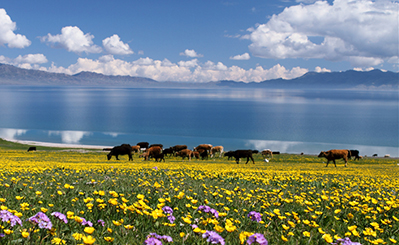 Attractions
Attractions Dining
Dining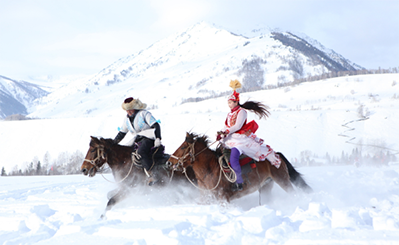 Culture
Culture